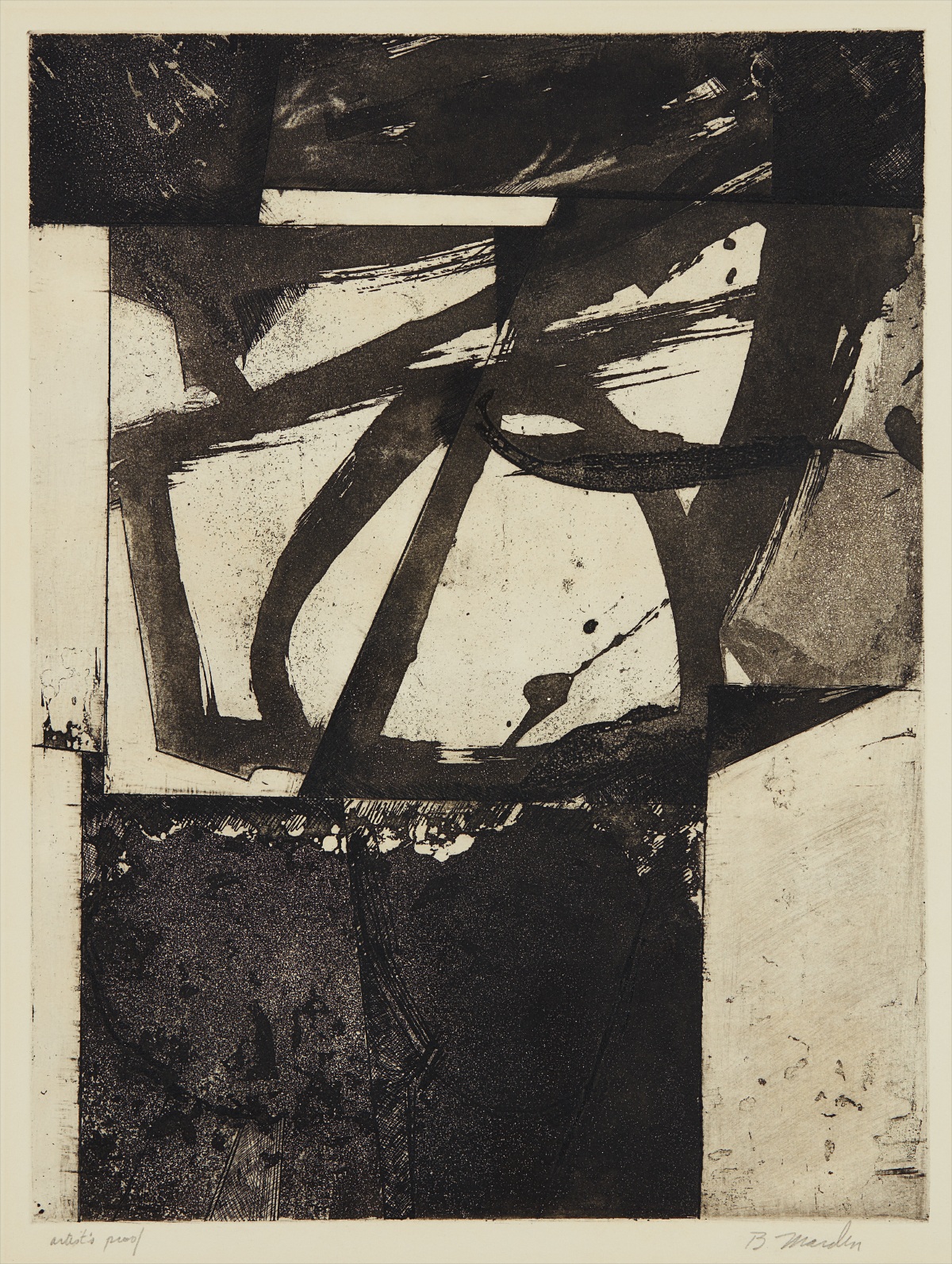

250
Brice Marden
Untitled
S. 20 1/8 x 15 1/8 in. (51.1 x 38.4 cm)
Full-Cataloguing
-Brice Marden
Spanning four decades, these prints are a collection of Brice Marden’s most profound triumphs. Fertile ground for meditative mark-marking and an emerging minimalist ethos, printmaking transformed Brice Marden as much as the enigmatic artist transformed printmaking. The early experiment Watsonville, 1963 announced Marden's forthcoming iconoclasm. Being together with folk singer Joan Baez in that same year amidst rolling hills in Watsonville, California’s “artichoke capital”, felt to Marden “like being in a Rothko.” Discarding with the Technicolor hues of more famous 1960s contemporaries, Watsonville instead arrived at a humble type of expressionism; energetic forms that quantified the sky, life, and landscape within rectilinear shapes all collapsed into perspectival convergence. As most paintings, prints, or drawings that would follow it, the early etching was a measured exploration of worldly experience.
Transcendence, something like the boundless feeling of gazing upon an ocean’s vastness, would define Brice Marden’s printmaking. Sailing the Greek Isles during the early 1970s, he sketched Mediterranean landscapes endlessly. His Adriatics portfolio of 1973 was a paradox akin to ancient Greek ideology that considered earthly elements as immaterial forces. Those countless studies of landscape condensed into one mesmerizing and strikingly flat horizon, homage to the cunning planarity and tromp l’oeil effects of ancient Mediterranean painting. Yet, beneath Marden’s block forms — as the screenprints Lana, 1966 and Lana 2, 1966 suggested — swirled seas of pure energy.
Printmaking provided Brice Marden with a portal into the organic; he described the process like a “. . . walk through the mud.” His grids became a playground for happenstance and intervention. Etching for Parkett, 1985 abandoned mechanistic precision; each cell differed from the next with smudged lines or rogue interjections. He recalled works like this as an “. . . exercise in how much you can keep something the same when you make it look different.” It was after a deep personal crisis in the 1980s that Brice Marden found salvation within strict systems of image making that provided him with small pockets for expression. Studying Eastern calligraphy during a 1984 trip to Asia reunited him with his estranged family and announced a mature style that brimmed with the vitality seen in Etchings to Rexroth, 1986. Pastoral writing by Taoist poets was the template for works like Distant Muses, 2000, the print that caps this prolific portfolio of prints illustrating its artist’s pensive, inner landscape.
Brice Marden
American | 1938Born in Bronxville and working between New York City, Tivoli, New York, and Hydra, Greece, Brice Marden developed a unique style that departs from his Abstract Expressionist and Minimalist contemporaries. Drawing from his personal experiences and global travels, Marden’s works demonstrate a gestural and organic emotion channeled through the power of color. By the late 1960s, Marden received international recognition as the master of the monochrome panel and, in the late 1970s, began exploring the relationship between horizontal and vertical planes. His practice is deeply informed by his knowledge of classical architecture, world religion, ancient history, and spirituality. Elected to the American Academy of Arts and Letters in 1998, Marden is represented in notable institutional collections including the Whitney Museum of Art, New York, Philadelphia Museum of Art, Stedelijk Museum, Amsterdam, and Centre Georges Pompidou, Paris.